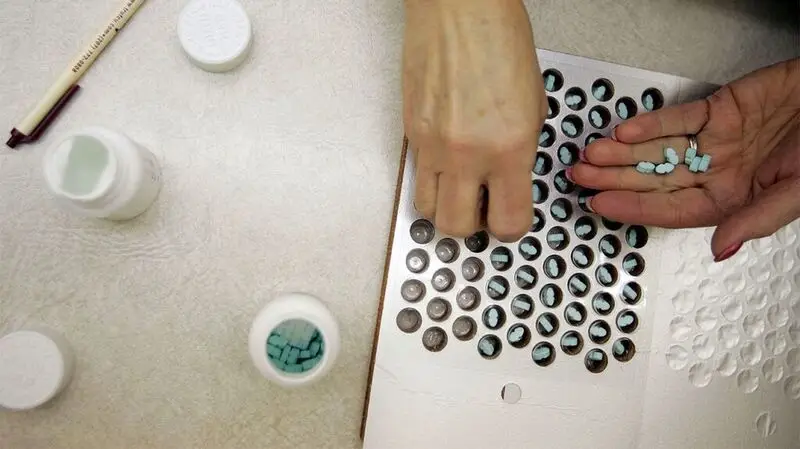
- Medicare is a federal health insurance program for older adults ages 65 and older.
- Open enrollment for 2025 Medicare plans runs through December 7.
- Some major changes in 2025 include a new $2,000 out-of-pocket max under Part D, eliminating the plan’s “donut hole” coverage gap, and fewer Medicare Advantage plans.
As of January 1st, five big changes will take effect for Medicare — a federal health insurance program for adults ages 65 and older.
Every year, senior adults have between October 15th through December 7th to enroll in Medicare or change plans.
There are four main parts to Medicare:
- Part A helps to cover inpatient care in hospitals, skilled nursing facilities, and home health care.
- Part B is for outpatient coverage, such as diagnosing and treating an illness at the doctor’s office, as well as preventive services, such as vaccines and wellness visits.
- Part C—also known as the Medicare Advantage plan—is bundled coverage that includes Parts A, B, and sometimes D.
- Part D provides coverage for prescription medications
Medical News Today spoke with three Medicare experts to learn more about the biggest changes coming in 2025 and how they may impact readers.
Starting January 1st, there will be fewer Medicare Advantage plans available.
“Medicare Advantage Plans are the alternative to receiving their Medicare through Original Medicare,” said Ryan Ramsey, associate director of health coverage and benefits for the National Council on Aging.
“These plans are offered by Medicare-approved private companies that must follow rules set by Medicare and provide Medicare Part A (hospital insurance) and Part B (medical insurance) coverage, as well including drug coverage (Part D) in most cases, all under one plan,” Ramsey told MNT.
“In most cases, you’ll need to use health care providers who participate in the plan’s network; however, some plans offer non-emergency coverage out-of-network, but typically at a higher cost,” he continued. “These plans may also offer additional extra benefits like vision, dental or fitness and wellness benefits that are not covered by Medicare.”
“The number of Medicare Advantage plans that will be available to the average person is expected to decrease by 7%,” Ramsey added. “This may result in less additional benefits being offered, smaller networks within plans, and an increase in overall out-of-pocket costs. However, the number of plans available in 2025 is still in the top three largest since 2010.”
Starting on January 1st, a new approach to Medicare Part D will remove the infamous “donut hole” and establish a new hard limit of $2,000 per year for out-of-pocket Part D drug spending.
“The Inflation Reduction Act aims to improve Medicare benefits by reducing out-of-pocket costs for prescription drugs,” Kanwar Kelley, MD, JD, co-founder and CEO of Side Health explained to Medical News Today. “This is being done by shrinking the ‘donut hole’ for prescription drug coverage. The ‘donut hole’ refers to the gap between a plan’s initial prescription medication coverage by co-payment or coinsurance and the time when a person meets catastrophic coverage limits where Medicare resumes sharing costs.
“While inside of the ‘donut hole,’ an individual must pay for their medications entirely out of pocket. Starting in 2025, the out-of-pocket costs before reaching the catastrophic stage will be capped at $2,000. Until now the limits were set at $8,000. This will mean substantial savings for patients who depend on costly prescription medications.”
Another 2025 change impacting Medicare Part D is an anticipated base premium increase.
“The Centers for Medicare and Medicaid Services (CMS) has now capped the amount companies are allowed to increase their annual premiums at 6%,” Ramsey noted. “The base beneficiary premium will be $36.78, which is $2.08 more than 2024 and the maximum of a 6% increase.”
According to Tim Smolen, Statewide Health Insurance Benefits Advisors (SHIBA) program manager in the Consumer Protection Division of the Washington State Office of the Insurance Commissioner, said the best way to learn more about Part D base premium increases is to use the plan finder tool on the Medicare website. Smolen added:
“Broad ranges and base premiums are useful guidelines, but every person’s experience is different. Each person should check their own drugs and pharmacies. It’s possible that each person in a couple might have a different Part D plan.”
There will also be a reduction in the number of stand-alone Medicare Part D plans available, according to KFF, a nonprofit focused on health policy.
“In 2025, 524 PDPs (Prescription Drug Plans) will be offered across the 34 PDP regions nationwide which is a 26% decrease from 2024,” Ramsey said. “This means that the average beneficiary in each state will have a choice of at least 12 stand-alone drug plans. This could mean a change in formularies, pharmacy networks on plans, and whether your plan has a deductible in 2025.”
“There will be a reduction in prescription drug plans under Part D, but this reduction may streamline options in favor of more plans with the built-in price stabilization feature,” Kelley said. “So, though fewer plans will be available, they should be more cost-effective.”
And the last big change affecting Medicare in 2025 is an expansion of mental health care and caregiver resources.
“Elder care is a huge source of financial burden and stress on families,” Kelley said. “Additional financial support will help reduce that burden and give back time to those looking for caretakers for people with dementia. This will also allow more individuals to age in place, reducing the need for costly institutional care.”
“Mental health issues for older adults is something we all need to talk about more,” Smolen said. “Please check in and ask how older people and people with disabilities are doing. They need to know you care. Also, there is support and treatment that Medicare pays for — including some telehealth. There are covered drug therapies. And there is also counseling support.”
“More people need some support to live independently and safely in their homes and we need to make that possible,” he added. “Seek out a local Area Agency on Aging at the Elder Care Resources locator.”





